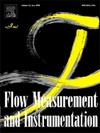2D digital proportional flow valve and characteristic analysis
IF 2.3
3区 工程技术
Q2 ENGINEERING, MECHANICAL
引用次数: 0
Abstract
The development of hydraulic components is trending toward lightweight, high precision, high flow rates, strong contamination resistance, and low leakage. A novel 2D digital proportional flow valve is proposed, the high- and low-pressure grooves on the spool, combined with the inclined groove on the sleeve, form a hydraulic damping half-bridge that controls the pressure difference at both ends of the spool based on its rotational angle. The operating principle of the valve was detailed, and a mathematical model was derived. Based on the model, stability analysis was conducted for different key structural parameters. A co-simulation model using Simulink, AMESim, and Adams was built to investigate the effects of various structural parameters on the main valve's performance. Finally, a prototype was manufactured and subjected to performance testing. The prototype weighs approximately 941 g. Under a system pressure of 14 MPa and full-scale input, it achieves a hysteresis of 4.6 %, a linearity of 7 %, a maximum leakage of 0.26 L/min, a step response time of 39 ms, an amplitude bandwidth of 16 Hz, and a phase bandwidth of 17 Hz. The 2D digital proportional flow valve features a simple structure, low leakage, high power-to-weight ratio, and excellent control accuracy and response speed, making it a suitable solution.
二维数字比例流量阀及其特性分析
液压元件的发展趋向于轻量化、高精度、大流量、强抗污染、低泄漏。提出了一种新型的二维数字比例流量阀,阀芯上的高低压槽与套筒上的斜槽结合形成液压阻尼半桥,根据阀芯的旋转角度控制阀芯两端的压差。详细介绍了该阀的工作原理,并建立了数学模型。在此基础上,对不同关键结构参数进行了稳定性分析。利用Simulink、AMESim和Adams建立联合仿真模型,研究了不同结构参数对主阀性能的影响。最后,制作了样机并进行了性能测试。原型机重约941克。在系统压力为14 MPa、满量程输入条件下,滞回率为4.6%,线性度为7%,最大泄漏量为0.26 L/min,阶跃响应时间为39 ms,幅值带宽为16 Hz,相位带宽为17 Hz。2D数字比例流量阀结构简单,泄漏小,功率重量比高,控制精度和响应速度优异,是一种合适的解决方案。
本文章由计算机程序翻译,如有差异,请以英文原文为准。
求助全文
约1分钟内获得全文
求助全文
来源期刊

Flow Measurement and Instrumentation
工程技术-工程:机械
CiteScore
4.30
自引率
13.60%
发文量
123
审稿时长
6 months
期刊介绍:
Flow Measurement and Instrumentation is dedicated to disseminating the latest research results on all aspects of flow measurement, in both closed conduits and open channels. The design of flow measurement systems involves a wide variety of multidisciplinary activities including modelling the flow sensor, the fluid flow and the sensor/fluid interactions through the use of computation techniques; the development of advanced transducer systems and their associated signal processing and the laboratory and field assessment of the overall system under ideal and disturbed conditions.
FMI is the essential forum for critical information exchange, and contributions are particularly encouraged in the following areas of interest:
Modelling: the application of mathematical and computational modelling to the interaction of fluid dynamics with flowmeters, including flowmeter behaviour, improved flowmeter design and installation problems. Application of CAD/CAE techniques to flowmeter modelling are eligible.
Design and development: the detailed design of the flowmeter head and/or signal processing aspects of novel flowmeters. Emphasis is given to papers identifying new sensor configurations, multisensor flow measurement systems, non-intrusive flow metering techniques and the application of microelectronic techniques in smart or intelligent systems.
Calibration techniques: including descriptions of new or existing calibration facilities and techniques, calibration data from different flowmeter types, and calibration intercomparison data from different laboratories.
Installation effect data: dealing with the effects of non-ideal flow conditions on flowmeters. Papers combining a theoretical understanding of flowmeter behaviour with experimental work are particularly welcome.
 求助内容:
求助内容: 应助结果提醒方式:
应助结果提醒方式:


